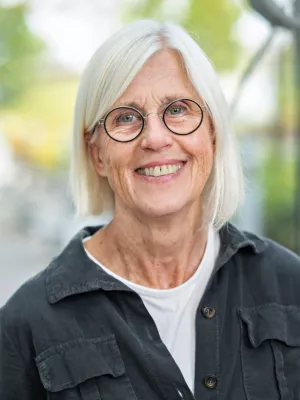
Carina Sjöholm
Universitetslektor, docent

Murder Walks in Ystad
Författare
Redaktör
- Britta Timm Knudsen
- Anne Marit Waade
Summary, in English
It is a question of a consumption of the place, often in a playful form: To be somewhere you have never been before, yet to be able to recognize the place, to feel the place and its corporeal qualities. Emotion and emotionality are resources to be affirmed (Bærenholdt et.al. 2004, Crouch 1999).
In this study I have tried to give some examples of how fiction in diverse forms has been used in order to create locations and spaces – both with respect to incoming tourists and the local inhabitants. You do not have to come from afar to experience Ystad as exotic – if you accept the fictionalised reading of it.
What happens then with the inhabitants in a town, marketed with imaginary geographies? Do they see it as a potential or as a colonising threat? Probably both, depending upon how strong the attraction is and how it is developed (“what if everyone goes by car?”). Something is due to happen with a village or a city that becomes mediated through the tourist business and the experience industry. Evidently Wallander is used for branding and marketing Ystad – because nowadays every place with some self-respect must find its identity, something significant, and a representative face. You have to have a value on the experience market.
The body is a hazardous term, possible to connect both to the corpse in the murder mystery and the actual body of the tourist, the receiver of sensations and empirical data. The space term is no less complex; it covers the actual place – such as Mariagatan in Ystad – as well as the theoretical relations that occur or are possible to interpret between the actual place and the fictitious events. In the crossroad of body and space the walking tourist embodies the detective, the victim or the murderer and is still someone – or something – else. That something else is the core of the murder walk.
Avdelning/ar
- Avdelningen för etnologi
- Institutionen för tjänstevetenskap
Publiceringsår
2010
Språk
Engelska
Publikation/Tidskrift/Serie
Tourism and Cultural Change
Issue
20
Dokumenttyp
Del av eller Kapitel i bok
Förlag
Channel View Publications
Ämne
- Social Sciences Interdisciplinary
- Ethnology
Nyckelord
- heritage
- crime tourism
- Literary tourism
- branding
- authenticity
- place
- walks
- cinematic tourism
Status
Published
ISBN/ISSN/Övrigt
- ISBN: 1-84541-127-7

